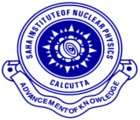Speaker
Description
Celestial capture of dark matter provides a useful handle on constraining its particulate properties. The capture formalism is sensitive to the phase space distribution of dark matter in the vicinity of the celestial object. This article aims at systematically studying the impact of uncertainties and the influence of cosmological simulations on the rate at which dark matter particles are captured inside a variety of celestial objects. Going beyond the framework of the standard halo model, we take up pragmatic dark matter velocity distribution models motivated from observations or cosmological simulations. Within the limits of the standard halo model, we report a maximum ∼20%∼20% change in the capture rate. Whereas this number can go upto ∼200%∼200% if the dark matter particles within the galactic halo is favored to have an empirical velocity distribution, obtaining the parameter values from well resolved and sophisticated cosmological simulations.

